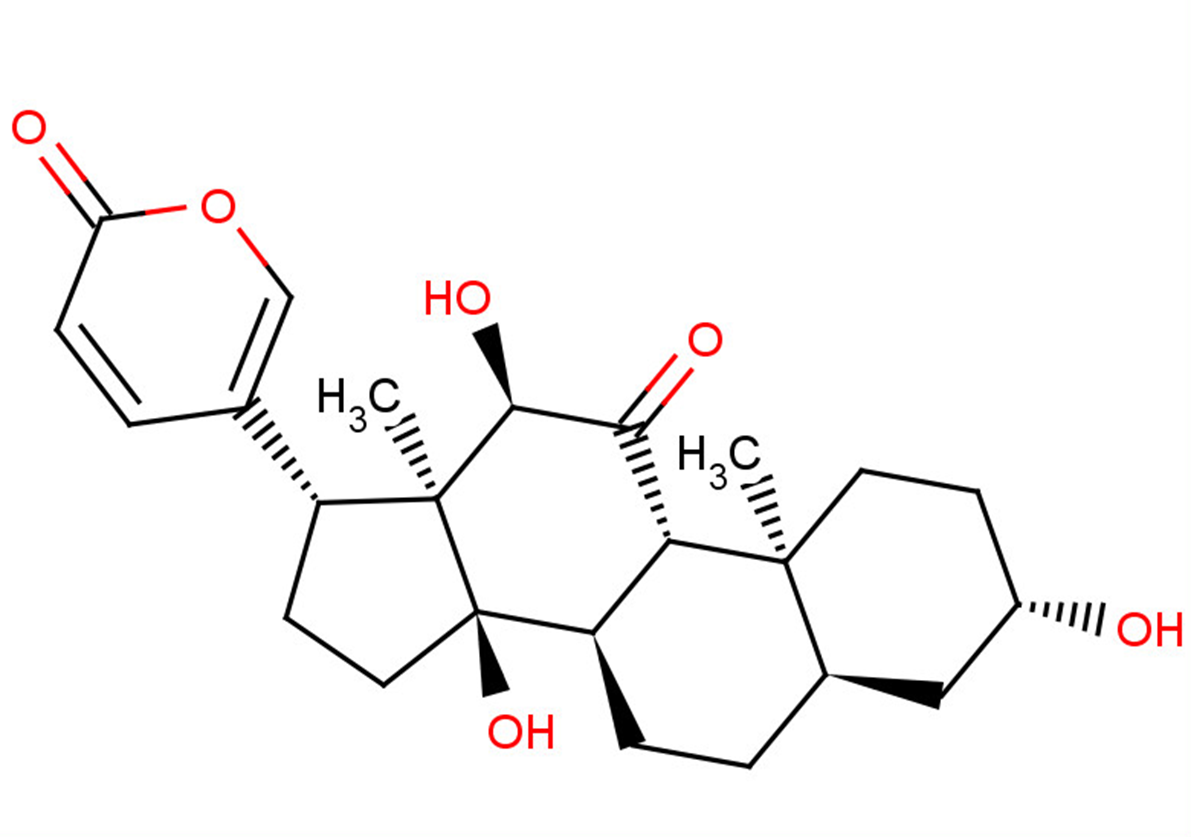
Pseudobufarenogin
CAS No. 17008-69-4
Pseudobufarenogin( ψ-Bufarenogin )
Catalog No. M23765 CAS No. 17008-69-4
Pseudobufarenogin, a novel anti-tumor compound, suppresses liver cancer growth by inhibiting receptor tyrosine kinase-mediated signaling.
Purity : >98% (HPLC)
 COA
COA
 Datasheet
Datasheet
 HNMR
HNMR
 HPLC
HPLC
 MSDS
MSDS
 Handing Instructions
Handing Instructions
| Size | Price / USD | Stock | Quantity |
| 5MG | 225 | In Stock |


|
| 10MG | 331 | In Stock |


|
| 25MG | 561 | In Stock |


|
| 50MG | 798 | In Stock |


|
| 100MG | Get Quote | In Stock |


|
| 200MG | Get Quote | In Stock |


|
| 500MG | Get Quote | In Stock |


|
| 1G | Get Quote | In Stock |


|
Biological Information
-
Product NamePseudobufarenogin
-
NoteResearch use only, not for human use.
-
Brief DescriptionPseudobufarenogin, a novel anti-tumor compound, suppresses liver cancer growth by inhibiting receptor tyrosine kinase-mediated signaling.
-
DescriptionPseudobufarenogin, a novel anti-tumor compound, suppresses liver cancer growth by inhibiting receptor tyrosine kinase-mediated signaling.
-
In Vitro——
-
In Vivo——
-
Synonymsψ-Bufarenogin
-
PathwayOthers
-
TargetOther Targets
-
RecptorOthers
-
Research Area——
-
Indication——
Chemical Information
-
CAS Number17008-69-4
-
Formula Weight416.51
-
Molecular FormulaC24H30O6
-
Purity>98% (HPLC)
-
SolubilityDMSO:Soluble
-
SMILESC[C@]([C@H](CC1)C(C=C2)=COC2=O)([C@H](C([C@@H]([C@H]2CC3)[C@@](C)(CC4)[C@H]3C[C@H]4O)=O)O)[C@@]12O
-
Chemical Name——
Shipping & Storage Information
-
Storage(-20℃)
-
ShippingWith Ice Pack
-
Stability≥ 2 years
Reference
1.Ding J, et al. ψ-Bufarenogin, a novel anti-tumor compound, suppresses liver cancer growth by inhibiting receptor tyrosine kinase-mediated signaling. Oncotarget. 2015 May 10;6(13):11627-39.
molnova catalog



related products
-
4-Azido-L-phenylalan...
4-Azido-L-phenylalanine (p-Azido-L-phenylalanine) is an amino acid derivative that acts as a photoaffinity marker and can be used to detect localized protein environments.
-
Sulfo-NHS-SS-Biotin ...
Sulfo-NHS-SS-biotin is a cell-impermeant and long-chain cleavable amine-reactive biotinylation reagent.
-
Lodoxamide
Lodoxamide is an antiallergic drug acting as a mast-cell stabilizer. It is effective in the treatment of asthma and allergic conjunctivitis.



 Cart
Cart
 sales@molnova.com
sales@molnova.com


